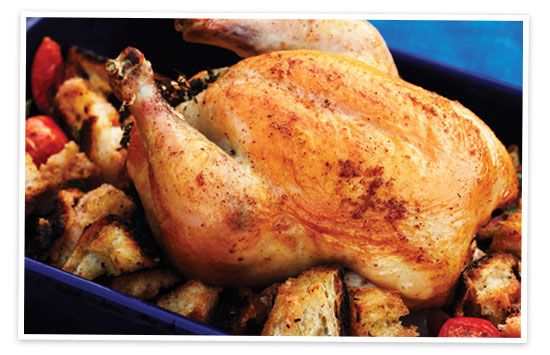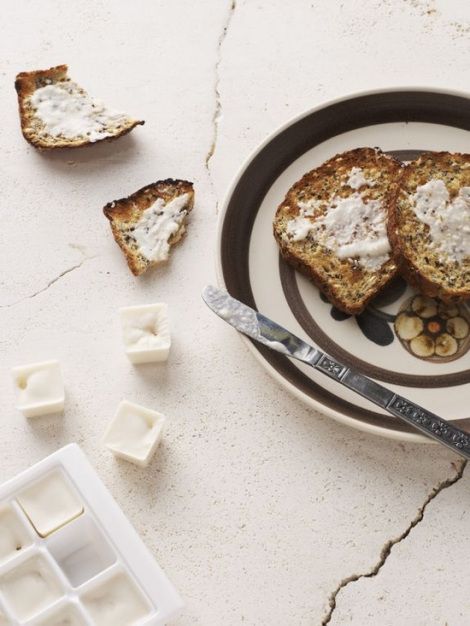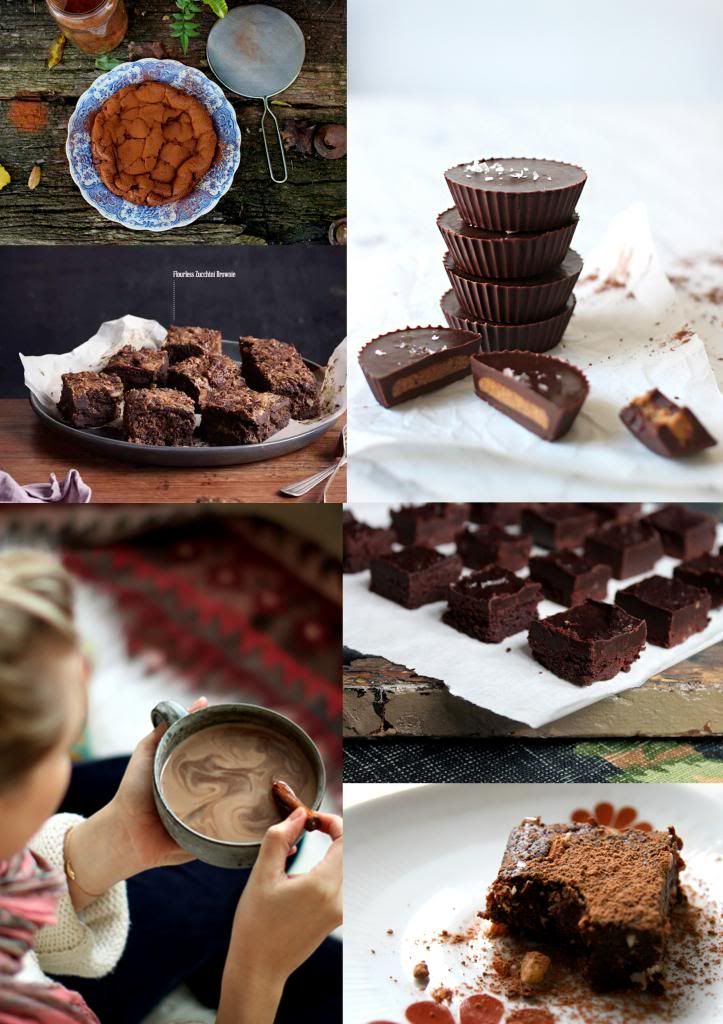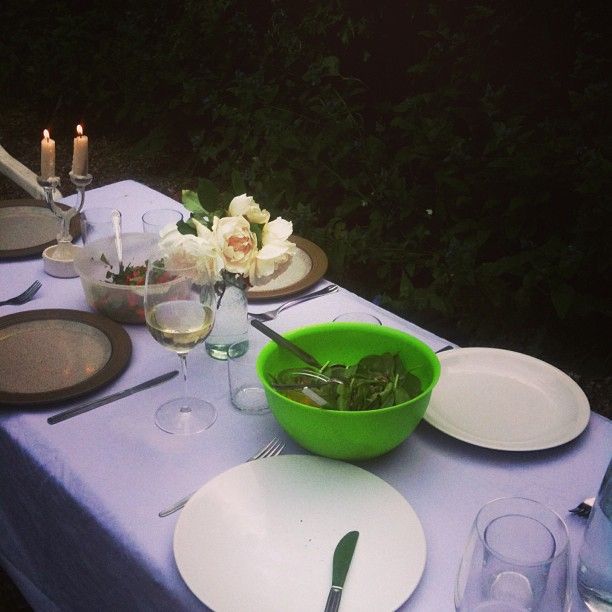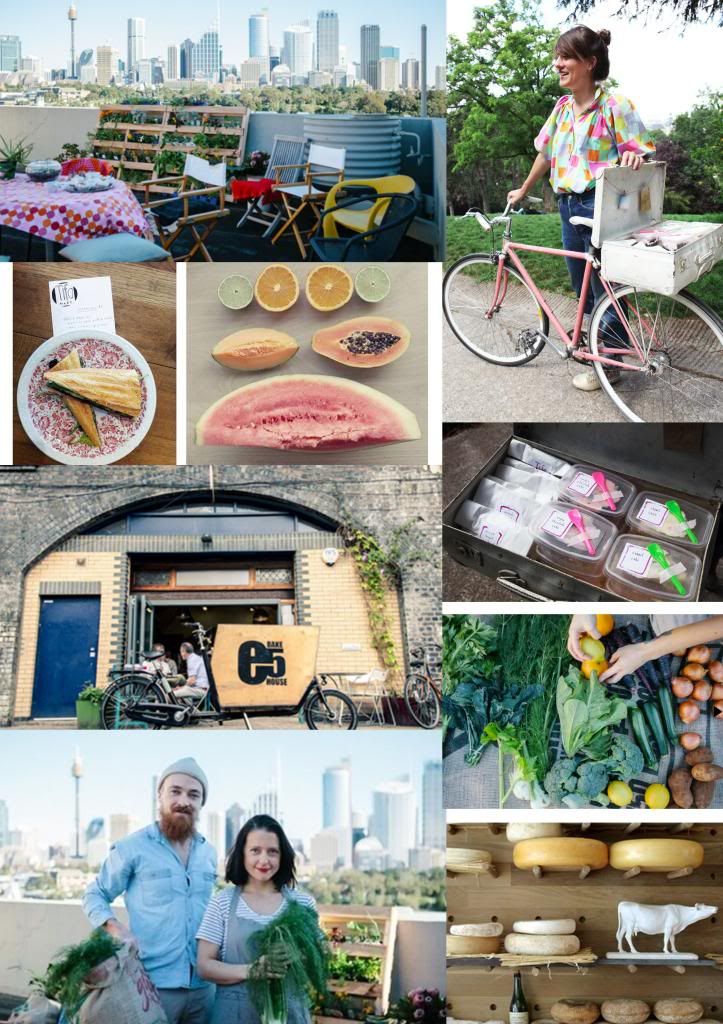A few recipes that are in high rotation in my kitchen at the moment.
Buckwheat crepes from Canal House Every Day
I adapted the recipe to be gluten free by using all buckwheat flour instead of the mix suggested. They are still a great consistency and just as delicious as the wheat versions. These are really quick and easy to prepare, and if you are in a real push you can skip the resting time and they will still turn out. It's as simple as combining 1.5 cups of buckwheat flour, 1.5 cups of water and 3 eggs, mixing until smooth and then pouring onto a warm frying pan. Cook for a few minutes until they look about right.
My favourite topping is some grated cheddar cheese (added to the crepe while still warm on the pan so it melts), mustard and fresh rocket. Also can be made into a dessert by putting a small amount of home-made chocolate (see this post for tips), letting it melt and spreading all over. Tastes very delicious and decadent.
Image source: Canal House
Super Crispy Roast Chicken from It's All Good
This has been a Sunday night favourite. I buy my chicken from Ginger Pig via Hubbub or from Meat N16. This is another super simple recipe that tastes amazing. All you need to do is clean the chicken, rub butter/coconut oil, salt and pepper on both sides, stuff with half a lemon and garlic, and pop in the oven for 1.5 hours, basting every 30 min. The best tip is at the end, add half a cup of boiling water to the pan and scrape up all the delicious roasted bits to make a kind of gravy. Pour this over the chicken meat to serve.
Image source: Goop
Coconut Butter from I Quit Sugar
This recipe makes you feel like a magician. You take a bag of shredded coconut, put it in your food processor or high-powered blender, and let it mix on high for about 10 - 15 minutes, scraping down as needed. After this time it will turn into a really creamy liquid that you can then pop in the fridge. It tastes amazing, a truly creamy coconut treat!
Image source: The I Quit Sugar Pinterest Page
Sunday, July 28, 2013
Thursday, July 25, 2013
The original and the best
When I was eleven,
all I wanted was a pair of Adidas snap pants. All the cool kids wore them. As
much as I campaigned though, Mum and Dad held their ground; they were too
expensive, I wouldn’t wear them. Then one Saturday we were shopping and I
spotted a stall selling rows of them. They were black and white, had the
snap-sides, and were only a fiver. I convinced my parents. But when I got them
home, something was off. The iconic logo was missing and the label read ‘Sportz
Xtreme’. They had all the elements of the real deal, but something didn’t feel
quite right.
I learnt a
valuable lesson that day; the original is the best. Whether we value a designer’s
trendy branding or an artist’s unique brushstrokes, there’s an aura around the
authentic beyond just what we can see, it is something we feel. The same is
true with food.
Unfortunately, for
the most part we are being sold replicas. Foods that have been taken apart and
put back together, had the popular nutrients of the moment added and demonized
ones removed.
From a quick look
in the supermarket, you would think we are more enlightened about nutrition
than ever. It seems we have food figured out – we’ve engineered it to cut out bad,
add in good. So why are there record levels of obesity and chronic disease? It just
doesn’t add up.
Nutrition as a
science is still relatively young and many things about food aren’t entirely
understood. One thing that is generally agreed, but isn’t as profitable, is
that eating food in its unrefined, original state is best. Nature has devised some
pretty clever systems that mean wholefoods nourish us on a level we can’t
replicate through processing.
So how can we get
more of the real deal onto our plates?
Ask more of your fruit and veggies; consider the skins, cores and seeds. This
won’t work with everything, watermelons I’m looking at you. But there are heaps
of options; adding citrus peel to salads, baking potatoes whole, chomping on
kiwifruit, hairy skin included.
Eat and drink full-fat dairy. It
tastes better, and our bodies can’t properly digest it without the fat. Milk and
yoghurt also contain fat-soluble vitamins, meaning we won’t absorb those
nutrients if it’s been skimmed. Choose real butter and ditch margarines, which
are chemically altered and all round bad for you.
Use real oils. Cook with stable fats such as coconut oil or ghee. Use
olive, sesame and nut oils at very low temperatures only, or better yet just as
dressing, as they release dangerous free-radicals when heated. Avoid easily damaged, processed oils such as canola,
vegetable and sunflower.
Think outside the breast – chicken, that is. Go beyond muscle meats and try
using more of the animal such as liver, offal and marrow. Keep the bones from
your roast to make nutrient-rich, homemade stock.
Choose disease
fighting, immune-boosting and, best of all, delicious wholefoods. Whether
they’re snap pants or snap peas, don’t settle for pale imitations, they just won’t
feel right.
This article was written for my weekly column in The Australian Times, The Whole Meal.
Sunday, July 14, 2013
sweet little things
From top left: Petite Kitchen Sunken Chocolate Souffle Cake / Zucchini Chocolate Brownies from Sarah Wilson's I Quit Sugar Chocolate Cookbook / My New Roots' Superfood Nut Butter Cups / My New Roots Superfood Haute Chocolate / Petite Kitchen's Nourishing Chocolate Fudge / My New Roots' Raw Brownie
The last few days I've come down with a cold and like most people, when I'm sick I crave comfort foods. For me, it's chicken and vegetable soup, vegemite toast, ginger tea and chocolate.
Problem is, I stopped eating sugar a few months ago and while I'm usually not tempted by the sweet stuff, when I'm feeling run down or ill it is pretty tough to walk away. Luckily, I've experimented with lots of recipes for healthier alternatives and now have a few staples up my sleeve that are quick, simple and will satisfy any sweet craving.
My go-to is a basic chocolate recipe that can be turned into lots of different treats. It contains just a few ingredients; raw cacao, a mix of coconut oil and cacao butter (or just one or the other depending on how I feel), and a touch of maple syrup or stevia (this could also be switched for rice malt syrup). All you do is melt the ingredients over low heat (ideally on a double boiler, or in a bowl on top of a steamer works well too!) and whisk together, then pour into a baking paper-lined vessel and pop in the freezer for around an hour. It's that easy!
Great thing is this recipe can be adapted with different flavours; you can add sea salt, or turn it into peanut butter cups, or add mint, or chilli, or coconut. You can make them more nutritious by adding maca or lucuma powder, or even popped quinoa. The options are endless!
This recipe is based on a few different ones I've read on some of my favourite food blogs. They all have a heap of great, healthy, wholefood recipes available so check them out!
Saturday, July 13, 2013
basic kitchen magic
Not so long ago, I hated cooking. It was
because I wasn’t good at it. My parents cooked for me, my boyfriend cooked for
me, a whole host of chefs at cafes and restaurants cooked for me. I enjoyed
food but to me the making of it was a mystery, magical even.
I was familiar with the world of food shown
on TV - the Masterchefs, Iron Chefs and Michelin stars. The glitz and glam of
food as entertainment. For all my enjoyment of these shows though, they did
something really damaging too; they made cooking intimidating. It seemed complicated
and time-consuming; something to be left to the professionals.
A good few years into my food journey
though, I’ve discovered a lot about food that the entertainment shows rarely
touch. They tout the glamour and drama around food, but rarely investigate the
food itself. The more I’ve submerged myself in the world of wholefoods, the
more I’ve discovered that the key to mastering cooking is really very
straightforward – let food be food.
It sounds obvious, but it’s a completely
liberating theory. Imagine if your food got better the less you did to it.
Imagine if it was better for you. Well, it is. There’s only one catch – you
need to start with good food.
That’s not necessarily as simple as it
sounds. With all kinds of industrially processed concoctions sitting in our
supermarkets disguised as food, it can be tricky spotting the real deal. The
easiest way around this is to cook for yourself with the raw, real thing - foods
that don’t have ingredients lists. Here
are a few staples that got me going:
Veggies.
Buy organic and local. Farmer’s markets are a great
place to start. They’ll be fresher, more flavorsome, and maybe even a bit
cheaper.
Bread. Switch sliced-supermarket blocks for traditionally baked Sourdough.
Made with just flour, sourdough starter, water and salt, it is created through
a lengthy fermentation process that means it is easier to digest and contains
more nutrients.
Meat. Choose pasture-raised, grass-fed. Sure, it costs more, but not only
will the animal have been treated right, it’s better for you and tastes
amazing.
Dairy. Try alternatives to cows milk such as goat or sheep. The taste may
be a bit different, but after a while they just taste like, well, milk – and
they are kinder on the stomach. Other options are nut milks, which you can make
yourself at home with some nuts, water and a strainer.
Salt. Avoid table salt, which has very little nutritional value. Instead
opt for sea salt, which makes your food sing (and makes you a little bit posh).
All the top chefs agree that the best way
to cook is to source the very best ingredients and then let them speak for
themselves. This rule applies to amateurs playing at home too, and it makes it
a lot harder to mess up. So avoid the
drama, less truly is more. Abracadabra.
This article was written for my weekly column in The Australian Times, The Whole Meal.
This article was written for my weekly column in The Australian Times, The Whole Meal.
Sunday, July 7, 2013
make a meal of it
Recently, I’ve had a culinary breakthrough that has changed what and how
I eat. It’s come after years of curiosity about food; where it comes from, how
it is made, what effect it has on our bodies. I’ve done my research and discovered
lots of ideas that, funnily enough, seem to contradict all the messages I see in
the supermarket.
Food and diet issues get loads of press at the moment. And after
trawling through countless blogs, watching just about all the documentaries on
Netflix and reading piles of books on the subject, I’ve realised there is
bottomless ocean of information out there.
Despite this though, there is no clear, simple answer. One reason is the
complexity of the subject and diversity of the world; different climates, cultures
and bodies. But also it is because there are so many different voices.
These days, the food and nutrition industries are all too happy to break
food down for us into components and categories; low-sugar, low-GI, percentages
of daily intake, calories per serving, grams per bite. It’s overwhelming and frankly,
confusing.
There are thousands of guides out there, from market research led adverts
to individual bloggers. Voices that all have an agenda. Raw, paleo, no-carb,
high-carb, organic only, sugar free, fat free, you name it.
Despite all the noise though, one idea stuck out to me and after testing
it for a few months I can say I feel healthier and happier than ever before. Fortunately,
this is not another quick fix but a way of approaching food that just about
everyone can achieve and ironically, has little to do with food itself.
It’s simple: eat meals.
I’ve been eating healthy stuff for a while but it always had to fit
around whatever else I was doing. Breakfast was on the go, lunch was ‘al desko’
in between emails. Dinner was at my desk again on a bad day, at home in front
of the TV on a good day. I was eating healthy food, but I wasn’t eating meals.
Is there a difference? I think there is. A meal, a proper, homemade,
wholefood, prepare-and-sit-down meal invites you to do a few things.
It invites you to prepare. To wash the leaves, chop the vegetables,
roast the meat. If you do that, you can’t help but develop a more intimate
knowledge, and concern, for what you’re eating and where it came from.
It invites you to sit at a table. Better posture, more space and quite
likely more time spent enjoying the fruits (and veggies) of your labour.
It invites you to talk. This assumes you are eating with others, which
if you can you always should. Research shows eating with company not only slows
you down, but you eat less.
While these changes sound largely abstract, they have an enormous effect
on digestion, on our mood and on our choices at the shop. Buy some food, cook
it, share it and enjoy it. Eat a meal.
This article was written for my weekly column in The Australian Times, The Whole Meal.
This article was written for my weekly column in The Australian Times, The Whole Meal.
Saturday, July 6, 2013
the new convenience store
I realise halfway home after a long day at work that I don't have any food in the fridge. I stop off at the local supermarket on the way; it could be a Tesco, it could be a Sainsburys, or if I'm lucky it could be a Waitrose. I'm hungry and dazzled by the abundance and apparent variety on offer. So many different cuisines from around the world, so many brands and colours and identical vegetables lined up, illuminated by the fluorescent lighting.
There are no windows, so I quickly forget how long I've been perusing the ready-made meals aisle or debating over whether to buy organic carrots or not. Before I know it I'm in a mile-long queue with a heavy basket full of things I don't need. I thought I was stopping off to pick up a few quick bits for dinner, but have left burdened, nearly an hour later, with a couple of back-breakingly heavy bags.
I ask myself, how did this happen? And yet it is a ritual I've repeated many times when I've been too lazy to plan ahead.
Most of the time I avoid last-minute food shopping, particularly at supermarkets. It can only ever lead to impulse purchases and frustration. I'm pretty good at food planning and cooking ahead on the weekends, making sure I have my ingredients lined up and ready to go. But like anyone, sometimes life gets the better of me and I'm left staring into a fridge that just contains some old cheese and rotting, forgotten about veggies.
Luckily, there are now alternatives for people who want to support local business and are conscious of eating organic, healthy produce. Small, start-up businesses are opening up around the world, revolutionising the way we buy food. Companies that deliver to your door, either at home or work, offer access to difficult-to-source, quality, artisan ingredients, and do it all with a smile.
Images from top left: The Local Harvest Collective featured on Broadsheet, Tiffany Lung with her bicycle via Tifamade, sandwhich by Tifamade, fruit via The Local Harvest Collective, cakes ready for delivery via Tifamade, E5 bakehouse via Hubbub, vegetables and the team behind The Local Harvest Collective, La Fromagerie via Hubbub.
In London, Hubbub is my go-to for online food shopping. It allows those lucky enough to live in its delivery catchment area to order from local food suppliers - from Ginger Pig's incredible pasture-raised meats to E5 Bakehouse's sourdough. It means I can arrive home from work, and be greeted by a lovely driver who has collected my selection of goods from around the neighbourhood for me, ready to be cooked and enjoyed.
In Sydney, The Local Harvest Collective are a new business operating a vegetable box scheme with a twist. These boxes are filled with more than just fruit and veg, including artisan bread, eggs and other essentials, as well as a bunch of seasonal flowers. Boxes can be delivered or collected from their charming rooftop garden.
In Paris, Tifamade delivers delicious sandwiches home-made from farmer's market ingredients to your office or event by bicycle. Started by keen cook, cyclist and American-in-Paris Tiffany Jung, you can also be inspired by her tumblr where she features a heap of mouth-watering sandwich combinations.
These are just three examples that have caught my eye, but there are countless others. If you too want to avoid supermarkets, which let's be honest have their profit margins not our health as a priority, then find out what businesses and schemes are operating in your local area. Community gardens, backyard brewers and bakers, farmers markets and more are popping up everywhere.
Ok so they might not be open 24 hours a day, but they also don't make you stand in long queues, fight with the automatic cashier over whether you have placed the item in your basket or not or sell you two for one when really, you just want one. Give me food lovingly prepared and delivered on a bicycle over that any day.
Luckily, there are now alternatives for people who want to support local business and are conscious of eating organic, healthy produce. Small, start-up businesses are opening up around the world, revolutionising the way we buy food. Companies that deliver to your door, either at home or work, offer access to difficult-to-source, quality, artisan ingredients, and do it all with a smile.
Images from top left: The Local Harvest Collective featured on Broadsheet, Tiffany Lung with her bicycle via Tifamade, sandwhich by Tifamade, fruit via The Local Harvest Collective, cakes ready for delivery via Tifamade, E5 bakehouse via Hubbub, vegetables and the team behind The Local Harvest Collective, La Fromagerie via Hubbub.
In London, Hubbub is my go-to for online food shopping. It allows those lucky enough to live in its delivery catchment area to order from local food suppliers - from Ginger Pig's incredible pasture-raised meats to E5 Bakehouse's sourdough. It means I can arrive home from work, and be greeted by a lovely driver who has collected my selection of goods from around the neighbourhood for me, ready to be cooked and enjoyed.
In Sydney, The Local Harvest Collective are a new business operating a vegetable box scheme with a twist. These boxes are filled with more than just fruit and veg, including artisan bread, eggs and other essentials, as well as a bunch of seasonal flowers. Boxes can be delivered or collected from their charming rooftop garden.
In Paris, Tifamade delivers delicious sandwiches home-made from farmer's market ingredients to your office or event by bicycle. Started by keen cook, cyclist and American-in-Paris Tiffany Jung, you can also be inspired by her tumblr where she features a heap of mouth-watering sandwich combinations.
Ok so they might not be open 24 hours a day, but they also don't make you stand in long queues, fight with the automatic cashier over whether you have placed the item in your basket or not or sell you two for one when really, you just want one. Give me food lovingly prepared and delivered on a bicycle over that any day.
Subscribe to:
Posts (Atom)

